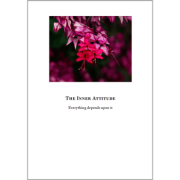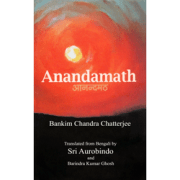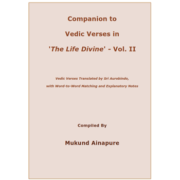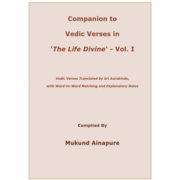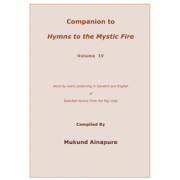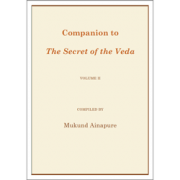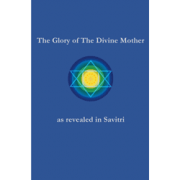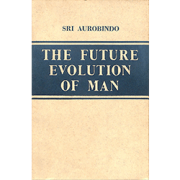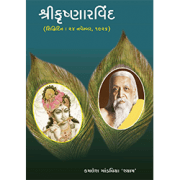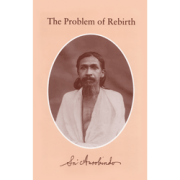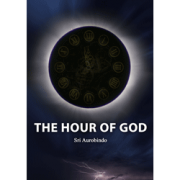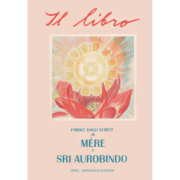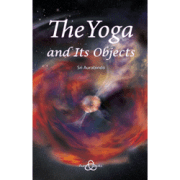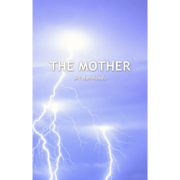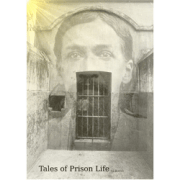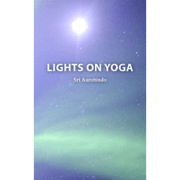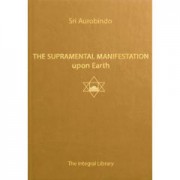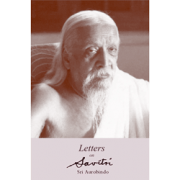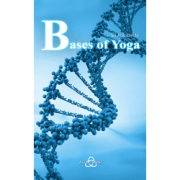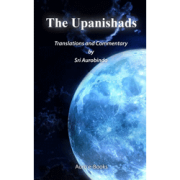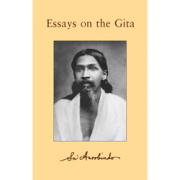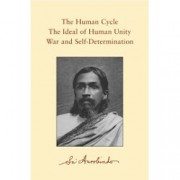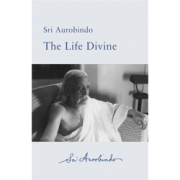Sri Aurobindo Books
Sri Aurobindo was born in Calcutta on 15 August 1872. At the age of seven he was taken to England for education. There he studied at St. Paul’s School, London, and at King’s College, Cambridge. Returning to India in 1893, he worked for the next thirteen years in the Princely State of Baroda in the service of the Maharaja and as a professor in Baroda College. During this period he also joined a revolutionary society and took a leading role in secret preparations for an uprising against the British Government in India.
In 1906, soon after the Partition of Bengal, Sri Aurobindo quit his post in Baroda and went to Calcutta, where he soon became one of the leaders of the Nationalist movement. He was the first political leader in India to openly put forward, in his newspaper Bande Mataram, the idea of complete independence for the country. Prosecuted twice for sedition and once for conspiracy, he was released each time for lack of evidence.
Sri Aurobindo had begun the practice of Yoga in 1905 in Baroda. In 1908 he had the first of several fundamental spiritual realisations. In 1910 he withdrew from politics and went to Pondicherry in order to devote himself entirely to his inner spiritual life and work. During his forty years in Pondicherry he evolved a new method of spiritual practice, which he called the Integral Yoga. Its aim is a spiritual realisation that not only liberates man’s consciousness but also transforms his nature. In 1926, with the help of his spiritual collaborator, the Mother, he founded the Sri Aurobindo Ashram. Among his many writings are The Life Divine, The Synthesis of Yoga and Savitri. Sri Aurobindo left his body on 5 December 1950.
Sri Aurobindo Books:
A LIFE SKETCH
Information quoted from website of Sri Aurobindo Ashram
from Volume 30, SABCL, p.1-6.
Sri Aurobindo was born in Calcutta on 15 August, 1872. In 1879, at the age of seven, he was taken with his two elder brothers to England for education and lived there for fourteen years. Brought up at first in an English family at Manchester, he joined St. Paul’s School in London in 1884 and in 1890 went from it with a senior classical scholarship to King’s College, Cambridge, where he studied for two years. In 1890 he passed also the open competition for the Indian Civil Service, but at the end of two years of probation failed to present himself at the riding examination and was disqualified for the Service. At this time the Gaekwar of Baroda was in London. Sri Aurobindo saw him, obtained an appointment in the Baroda Service and left England for India, arriving there in February, 1893.
Sri Aurobindo passed thirteen years, from 1893 to 1906, in the Baroda Service, first in the Revenue Department and in secretariate work for the Maharaja, afterwards as Professor of English and, finally, Vice-Principal in the Baroda College. These were years of self-culture, of literary activity — for much of the poetry afterwards published from Pondicherry was written at this time — and of preparation for his future work. In England he had received, according to his father’s express instructions, an entirely occidental education without any contact with the culture of India and the East. At Baroda he made up the deficiency, learned Sanskrit and several modern Indian languages, assimilated the spirit of Indian civilisation and its forms past and present. A great part of the last years of this period was spent on leave in silent political activity, for he was debarred from public action by his position at Baroda. The outbreak of the agitation against the partition of Bengal in 1905 gave him the opportunity to give up the Baroda Service and join openly in the political movement. He left Baroda in 1906 and went to Calcutta as Principal of the newly-founded Bengal National College.
The political action of Sri Aurobindo covered eight years, from 1902 to 1910. During the first half of this period he worked behind the scenes, preparing with other co-workers the beginnings of the Swadeshi (Indian Sinn Fein) movement, till the agitation in Bengal furnished an opening for the public initiation of a more forward and direct political action than the moderate reformism which had till then been the creed of the Indian National Congress. In 1906 Sri Aurobindo came to Bengal with this purpose and joined the New Party, an advanced section small in numbers and not yet strong in influence, which had been recently formed in the Congress. The political theory of this party was a rather vague gospel of Non-cooperation; in action it had not yet gone farther than some ineffective clashes with the Moderate leaders at the annual Congress assembly behind the veil of secrecy of the “Subjects Committee”. Sri Aurobindo persuaded its chiefs in Bengal to come forward publicly as an All-India party with a definite and challenging programme, putting forward Tilak, the popular Maratha leader at its head, and to attack the then dominant Moderate (Reformist or Liberal) oligarchy of veteran politicians and capture from them the Congress and the country. This was the origin of the historic struggle between the Moderates and the Nationalists (called by their opponents Extremists) which in two years changed altogether the face of Indian politics.
The new-born Nationalist party put forward Swaraj (independence) as its goal as against the far-off Moderate hope of colonial self-government to be realised at a distant date of a century or two by a slow progress of reform; it proposed as its means of execution a programme which resembled in spirit, though not in its details, the policy of Sinn Fein developed some years later and carried to a successful issue in Ireland. The principle of this new policy was self-help; it aimed on one side at an effective organisation of the forces of the nation and on the other professed a complete non-cooperation with the Government. Boycott of British and foreign goods and the fostering of Swadeshi industries to replace them, boycott of British law courts, and the foundation of a system of Arbitration courts in their stead, boycott of Government universities and colleges and the creation of a network of National colleges and schools, the formation of societies of young men which would do the work of police and defence and, wherever necessary, a policy of passive resistance were among the immediate items of the programme. Sri Aurobindo hoped to capture the Congress and make it the directing centre of an organised national action, an informal State within the State, which would carry on the struggle for freedom till it was won. He persuaded the party to take up and finance as its recognised organ the newly-founded daily paper, Bande Mataram, of which he was at the time acting editor. The Bande Mataram, whose policy from the beginning of 1907 till its abrupt winding up in 1908 when Sri Aurobindo was in prison was wholly directed by him, circulated almost immediately all over India. During its brief but momentous existence it changed the political thought of India which has ever since preserved fundamentally, even amidst its later developments, the stamp then imparted to it. But the struggle initiated on these lines, though vehement and eventful and full of importance for the future, did not last long at the time; for the country was still unripe for so bold a programme.
Sri Aurobindo was prosecuted for sedition in 1907 and acquitted. Up till now an organiser and writer, he was obliged by this event and by the imprisonment or disappearance of other leaders to come forward as the acknowledged head of the party in Bengal and to appear on the platform for the first time as a speaker. He presided over the Nationalist Conference at Surat in 1907 where in the forceful clash of two equal parties the Congress was broken to pieces. In May, 1908, he was arrested in the Alipore Conspiracy Case as implicated in the doings of the revolutionary group led by his brother Barindra; but no evidence of any value could be established against him and in this case too he was acquitted. After a detention of one year as undertrial prisoner in the Alipore Jail, he came out in May, 1909, to find the party organisation broken, its leaders scattered by imprisonment, deportation or self-imposed exile and the party itself still existent but dumb and dispirited and incapable of any strenuous action. For almost a year he strove single-handed as the sole remaining leader of the Nationalists in India to revive the movement. He published at this time to aid his effort a weekly English paper, the Karmayogin, and a Bengali weekly, the Dharma. But at last he was compelled to recognise that the nation was not yet sufficiently trained to carry out his policy and programme. For a time he thought that the necessary training must first be given through a less advanced Home Rule movement or an agitation of passive resistance of the kind created by Mahatma Gandhi in South Africa. But he saw that the hour of these movements had not come and that he himself was not their destined leader. Moreover, since his twelve months’ detention in the Alipore Jail, which had been spent entirely in practice of Yoga, his inner spiritual life was pressing upon him for an exclusve concentration. He resolved therefore to withdraw from the political field, at least for a time.
In February, 1910, he withdrew to a secret retirement at Chandernagore and in the beginning of April sailed for Pondicherry in French lndia. A third prosecution was launched against him at this moment for a signed article in the Karmayogin; in his absence it was pressed against the printer of the paper who was convicted, but the conviction was quashed on appeal in the High Court of Calcutta. For the third time a prosecution against him had failed. Sri Aurobindo had left Bengal with some intention of returning to the political field under more favourable circumstances; but very soon the magnitude of the spiritual work he had taken up appeared to him and he saw that it would need the exclusive concentration of all his energies. Eventually he cut off connection with politics, refused repeatedly to accept the Presidentship of the National Congress and went into a complete retirement. During all his stay at Pondicherry from 1910 onward he remained more and more exclusively devoted to his spiritual work and his sadhana.
In 1914 after four years of silent Yoga he began the publication of a philosophical monthly, the Arya. Most of his more important works, The Life Divine, The Synthesis of Yoga, Essays on the Gita, The Isha Upanishad, appeared serially in the Arya. These works embodied much of the inner knowledge that had come to him in his practice of Yoga. Others were concerned with the spirit and significance of Indian civilisation and culture (The Foundations of Indian Culture), the true meaning of the Vedas (The Secret of the Veda), the progress of human society (The Human Cycle), the nature and evolution of poetry (The Future Poetry), the possibility of the unification of the human race (The Ideal of Human Unity). At this time also he began to publish his poems, both those written in England and at Baroda and those, fewer in number, added during his period of political activity and in the first years of his residence at Pondicherry. The Arya ceased publication in 1921 after six years and a half of uninterrupted appearance. Sri Aurobindo lived at first in retirement at Pondicherry with four or five disciples. Afterwards more and yet more began to come to him to follow his spiritual path and the number became so large that a community of sadhaks had to be formed for the maintenance and collective guidance of those who had left everything behind for the sake of a higher life. This was the foundation of the Sri Aurobindo Ashram which has less been created than grown around him as its centre.
Sri Aurobindo began his practice of Yoga in 1904. At first gathering into it the essential elements of spiritual experience that are gained by the paths of divine communion and spiritual realisation followed till now in India, he passed on in search of a more complete experience uniting and harmonising the two ends of existence, Spirit and Matter. Most ways of Yoga are paths to the Beyond leading to the Spirit and, in the end, away from life; Sri Aurobindo’s rises to the Spirit to redescend with its gains bringing the light and power and bliss of the Spirit into life to transform it. Man’s present existence in the material world is in this view or vision of things a life in the Ignorance with the Inconscient at its base, but even in its darkness and nescience there are involved the presence and possibilities of the Divine. The created world is not a mistake or a vanity and illusion to be cast aside by the soul returning to heaven or Nirvana, but the scene of a spiritual evolution by which out of this material inconscience is to be manifested progressively the Divine Consciousness in things. Mind is the highest term yet reached in the evolution, but it is not the highest of which it is capable. There is above it a Supermind or eternal Truth-Consciousness which is in its nature the self-aware and self-determining light and power of a Divine Knowledge. Mind is an ignorance seeking after Truth, but this is a self-existent Knowledge harmoniously manifesting the play of its forms and forces. It is only by the descent of this supermind that the perfection dreamed of by all that is highest in humanity can come. It is possible by opening to a greater divine consciousness to rise to this power of light and bliss, discover one’s true self, remain in constant union with the Divine and bring down the supramental Force for the transformation of mind and life and body. To realise this possibility has been the dynamic aim of Sri Aurobindo’s Yoga.
Sri Aurobindo left his body on December 5, 1950. The Mother carried on his work until November 17, 1973. Their work continues.
SRI AUROBINDO ON HIMSELF
The following quotes are from Volume 26, SABCL,“On Himself”
I see that you have persisted in giving a biography — is it really necessary or useful? The attempt is bound to be a failure, because neither you nor anyone else knows anything at all of my life; it has not been on the surface for men to see.
p.378
* * *
I had no urge toward spirituality in me, I developed spirituality. I was incapable of understanding metaphysics, I developed into a philosopher. I had no eye for painting — I developed it by Yoga. I transformed my nature from what it was to what it was not. I did it by a special manner, not by a miracle and I did it to show what could be done and how it could be done. I did not do it out of any personal necessity of my own or by a miracle without any process. I say that if it is not so, then my Yoga is useless and my life was a mistake — a mere absurd freak of Nature without meaning or consequence. You all seem to think it a great compliment to me to say that what I have done has no meaning for anybody except myself — it is the most damaging criticism on my work that could be made. I also did not do it by myself, if you mean by myself the Aurobindo that was. He did it by the help of Krishna and the Divine Shakti. I had help from human sources also.
p.148-9 (13-2-1935)
* * *
Q: How did your intellect become so powerful even before you started Yoga?
A: It was not any such thing before I started the Yoga. I started the Yoga in 1904 and all my work except some poetry was done afterwards. Moreover, my intelligence was inborn and so far as it grew before the Yoga, it was not by training but by a wide haphazard activity developing ideas from all things read, seen or experienced. That is not training, it is natural growth.
p.222 (13-11-1936)
* * *
But what strange ideas again! — that I was born with a supramental temperament and that I know nothing of hard realities! Good God! My whole life has been a struggle with hard realities, from hardships, starvation in England and constant and fierce difficulties to the far greater difficulties continually cropping up here in Pondicherry, external and internal. My life has been a battle from its early years and is still a battle: the fact that I wage it now from a room upstairs and by spiritual means as well as others that are external makes no difference to its character. But, of course, as we have not been shouting about these things, it is natural, I suppose, for others to think that I am living in an august, glamorous, lotus-eating dreamland where no hard facts of life or Nature present themselves. But what an illusion all the same!
p.153-4
* * *
You think then that in me (I don’t bring in the Mother) there was never any doubt or despair, no attacks of that kind. I have borne every attack which human beings have borne, otherwise I would be unable to assure anybody “This too can be conquered.” At least I would have no right to say so. Your psychology is terribly rigid. I repeat, the Divine when he takes on the burden of terrestrial nature, takes it fully, sincerely and without any conjuring tricks or pretence. If he has something behind him which emerges always out of the coverings, it is the same thing in essence even if greater in degree, that there is behind others — and it is to awaken that that he is here.
The psychic being does the same for all who are intended for the spiritual way — men need not be extraordinary beings to follow it. That is the mistake you are making — to harp on greatness as if only the great can be spiritual.
p.154 (8-3-1935)
* * *
Q: We have been wondering why you should have to write and rewrite your poetry — for instance, “Savitri” ten or twelve times — when you have all the inspiration at your command and do not have to receive it with the difficulty that faces budding Yogis like us.
A: That is very simple. I used Savitri as a means of ascension. I began with it on a certain mental level, each time I could reach a higher level I rewrote from that level. Moreover I was particular — if part seemed to me to come from any lower levels I was not satisfied to leave it because it was good poetry. All had to be as far as possible of the same mint. In fact Savitri has not been regarded by me as a poem to be written and finished, but as a field of experimentation to see how far poetry could be written from one’s own Yogic consciousness and how that could be made creative. I did not rewrite Rose of God or the sonnets except for two or three verbal alterations made at the moment.
p.239
* * *
Q: The Overmind seems so distant from us, and your Himalayan austerity and grandeur takes my breath away, making my heart palpitate!
A: O rubbish! I am austere and grand, grim and stern! every blasted thing I never was! I groan in an un-Aurobindian despair when I hear such things. What has happened to the common sense of all you people? In order to reach the Overmind it is not at all necessary to take leave of this simple but useful quality. Common sense by the way is not logic (which is the least commonsense-like thing in the world), it is simply looking at things as they are without inflation or deflation — not imagining wild imaginations — or for that matter despairing “I know not why” despairs.
p.354-5 (23-2-1935)
* * *
You say that this way is too difficult for you or the likes of you and it is only “Avatars” like myself or the Mother that can do it. That is a strange misconception; for it is, on the contrary, the easiest and simplest and most direct way and anyone can do it, if he makes his mind and vital quiet, even those who have a tenth of your capacity can do it. It is the other way of tension and strain and hard endeavour that is difficult and needs a great force of Tapasya. As for the Mother and myself, we have had to try all ways, follow all methods, to surmount mountains of difficulties, a far heavier burden to bear than you or anybody else in the Ashram or outside, far more difficult conditions, battles to fight, wounds to endure, ways to cleave through impenetrable morass and desert and forest, hostile masses to conquer — a work such as, I am certain, none else had to do before us. For the Leader of the Way in a work like ours has not only to bring down and represent and embody the Divine, but to represent too the ascending element in humanity and to bear the burden of humanity to the full and experience, not in a mere play or Lila but in grim earnest, all the obstruction, difficulty, opposition, baffled and hampered and only slowly victorious labour which are possible on the Path. But it is not necessary nor tolerable that all that should be repeated over again to the full in the experience of others. It is because we have the complete experience that we can show a straighter and easier road to others — if they will only consent to take it. It is because of our experience won at a tremendous price that we can urge upon you and others, “Take the psychic attitude; follow the straight sunlit path, with the Divine openly or secretly upbearing you — if secretly, he will yet show himself in good time, — do not insist on the hard, hampered, roundabout and difficult journey.”
p.463 (5-5-1932)
* * *
The Mother’s consciousness is the divine Consciousness and the Light that comes from it is the light of the divine Truth, the Force that she brings down is the force of the divine Truth. One who receives and accepts and lives in the Mother’s light, will begin to see the truth on all the planes, the mental, the vital, the physical. He will reject all that is undivine, — the undivine is the falsehood, the ignorance, the error of the dark forces; the undivine is all that is obscure and unwilling to accept the divine Truth and its light and force. The undivine, therefore, is all that is unwilling to accept the light and force of the Mother. That is why I am always telling you to keep yourself in contact with the Mother and with her light and Force, because it is only so that you can come out of this confusion and obscurity and receive the Truth that comes from above.
When we speak of the Mother’s Light or my Light in a special sense, we are speaking of a special occult action — we are speaking of certain lights that come from the Supermind. In this action the Mother’s is the White Light that purifies, illumines, brings down the whole essence and power of the Truth and makes the transformation possible. But in fact all light that comes from above, from the highest divine Truth is the Mother’s.
There is no difference between the Mother’s path and mine; we have and have always had the same path, the path that leads to the supramental change and the divine realisation; not only at the end, but from the beginning they have been the same.
The attempt to set up a division and opposition, putting the Mother on one side and myself on another and opposite or quite different side, has always been a trick of the forces of the Falsehood when they want to prevent a Sadhak from reaching the Truth. Dismiss all such falsehoods from your mind.
Know that the Mother’s light and force are the light and force of the Truth; remain always in contact with the Mother’s light and force, then only can you grow into the divine Truth.
p.455 (10-9-1931)
THE MOTHER ON SRI AUROBINDO
All quotes are from the Collected Works of the Mother.
What Sri Aurobindo represents in the world’s history is not a teaching, not even a revelation; it is a decisive action direct from the Supreme.
from Volume 13, Words of the Mother, pp.1-35
14 February 1961
* * *
Sri Aurobindo has come on earth not to bring a teaching or a creed in competition with previous creeds or teachings, but to show the way to overpass the past and to open concretely the route towards an imminent and inevitable future.
from Volume 13, Words of the Mother, pp.1-35
22 February 1967
* * *
Sri Aurobindo came upon earth to teach this truth to men. He told them that man is only a transitional being living in a mental consciousness, but with the possibility of acquiring a new consciousness, the Truth-consciousness, and capable of living a life perfectly harmonious, good and beautiful, happy and fully conscious. During the whole of his life upon earth, Sri Aurobindo gave all his time to establish in himself this consciousness he called supramental, and to help those gathered around him to realise it.
from Volume 12, On Education, p.116
(24 July 1951)
* * *
But to have this precise perception…listen, as I had when I came from Japan: I was on the boat, at sea, not expecting anything (I was of course busy with the inner life, but I was living physically on the boat), when all of a sudden, abruptly, about two nautical miles from Pondicherry, the quality, I may even say the physical quality of the atmosphere, of the air, changed so much that I knew we were entering the aura of Sri Aurobindo. It was a physical experience and I guarantee that whoever has a sufficiently awakened consciousness can feel the same thing.
from Volume 4, Questions and Answers 1950-51, p. 223
(17 March 1951)
* * *
I incidentally could tell you that in all kinds of so-called spiritual literature I had always read marvellous things about this state of trance or samadhi, and it so happened that I had never experienced it. So I did not know whether this was a sign of inferiority. And when I came here, one of my first questions to Sri Aurobindo was: “What do you think of samadhi, that state of trance one does not remember? One enters into a condition which seems blissful, but when one comes out of it, one does not know at all what has happened.” Then he looked at me, saw what I meant and told me, “It is unconsciousness.” I asked him for an explanation, I said, “What?” He told me, “Yes, you enter into what is called samadhi when you go out of your conscious being and enter a part of your being which is completely unconscious, or rather a domain where you have no corresponding consciousness — you go beyond the field of your consciousness and enter a region where you are no longer conscious. You are in the impersonal state, that is to say, a state in which you are unconscious; and that is why, naturally, you remember nothing, because you were not conscious of anything.” So he reassured me and I said, “Well, this has never happened to me.” He replied, “Nor to me!”
from Volume 8, Questions and Answers 1956, p.275-6
(22 August 1956)
* * *
I am going to give you two examples to make you understand what true spontaneity is. One — you all know about it undoubtedly — is of the time Sri Aurobindo began writing the Arya, in 1914. It was neither a mental knowledge nor even a mental creation which he transcribed: he silenced his mind and sat at the typewriter, and from above, from the higher planes, all that had to be written came down, all ready, and he had only to move his fingers on the typewriter and it was transcribed. It was in this state of mental silence which allows the knowledge — and even the expression — from above to pass through that he wrote the whole Arya, with its sixty-four printed pages a month. This is why, besides, he could do it, for if it had been a mental work of construction it would have been quite impossible.
from Volume 8, Questions and Answers 1956, p.282
(29 August 1956)
* * *
You remember the night of the great cyclone, when there was a tremendous noise and splash of rain all about the place. I thought I would go to Sri Aurobindo’s room and help him shut the windows. I just opened his door and found him sitting quietly at his desk, writing. There was such a solid peace in the room that nobody would have dreamed that a cyclone was raging outside. All the windows were wide open, not a drop of rain was coming inside.
from Volume 3, Questions and Answers, p.155
(1930-31)
* * *
On the other hand, there was someone (I shall tell you who afterwards) who had in his room hundreds of books, countless sheets of paper, notebooks and all sorts of things, and so you entered the room and saw books and papers everywhere — a whole pile, it was quite full. But if you were unfortunate enough to shift a single little bit of paper from its place, he knew it immediately and asked you, “Who has touched my things?” You, when you come in, see so many things that you feel quite lost. And yet each thing had its place. And it was so consciously done, I tell you, that if one paper was displaced — for instance, a paper with notes on it or a letter or something else which was taken away from one place and placed in another with the idea of putting things in order — he used to say “You have touched my things; you have displaced them and created a disorder in my things.” That of course was Sri Aurobindo!
from Volume 6, Questions and Answers 1954, p. 14
(3 February 1954)
* * *
The other story is of the days Sri Aurobindo had the habit of walking up and down in his rooms. He used to walk for several hours like that, it was his way of meditating. Only, he wanted to know the time, so a clock had been put in each room to enable him to see the time at any moment. There were three such clocks. One was in the room where I worked; it was, so to say, his starting-point. One day he came and asked, “What time is it?” He looked and the clock had stopped. He went into the next room, saying, “I shall see the time there” — the clock had stopped. And it had stopped at the same minute as the other, you understand, with the difference of a few seconds. He went to the third room…the clock had stopped. He continued walking three times like that — all the clocks had stopped! Then he returned to my room and said, “But this is impossible! This is surely a bad joke!” and all the clocks, one after the other, started working again. I saw it myself, you know, it was a charming incident.
from Volume 4, Questions and Answers 1950-51, p.275-6
* * *
I have seen Sri Aurobindo doing this in somebody’s head, somebody who used to complain of being troubled by thoughts. It was as if his hand reached out and took hold of the little black dancing point and then did this (gesture with the finger-tips), as when one picks up an insect, and he threw it far away. And that was all. All still, quiet, luminous…
from Volume 9, Questions and Answers 1957-58, p.254
(8 January 1958)
* * *
I had asked myself a question about Sri Aurobindo. I wanted to know at what point he had arrived when he passed away — at what point of transformation. What difference in the work, for example, is there between what you are doing now and what he was doing at that time?
He had gathered in his body a great amount of supramental force and as soon as he left… You see, he was lying on his bed, I stood by his side, and in a way altogether concrete — concrete with such a strong sensation as to make one think that it could be seen — all this supramental force which was in him passed from his body into mine. And I felt the friction of the passage. It was extraordinary — extraordinary.
from Volume 11, Notes on the Way, p. 328
(20 December 1972)
* * *
Today is the first day of Sri Aurobindo’s centenary year. Though he has left his body his is still with us, alive and active.
Sri Aurobindo belongs to the future; he is the messenger of the future. He still shows us the way to follow in order to hasten the realisation of a glorious future fashioned by the Divine Will.
All those who want to collaborate for the progress of humanity and for India’s luminous destiny must unite in a clairvoyant aspiration and in an illumined work.
from Volume 13, Words of the Mother, pp.1-35
15 August 1971
* * *
Sri Aurobindo came upon earth to announce the manifestation of the supramental world and not merely did he announce this manifestation but embodied also in part the supramental force and showed by example what one must do to prepare oneself for manifesting it. The best thing we can do is to study all that he has told us and endeavour to follow his example and prepare ourselves for the new manifestation.
This gives life its real sense and will help us to overcome all obstacles.
Let us live for the new creation and we shall grow stronger and stronger by remaining young and progressive.
from Volume 13, Words of the Mother, pp.1-35
30 January 1972
* * *
When in your heart and thought you make no difference between Sri Aurobindo and me, when to think of Sri Aurobindo will be to think of me and to think of me will mean to think of Sri Aurobindo inevitably, when to see one will mean inevitably to see the other, like one and the same Person, — then you will know that you begin to be open to the supramental force and consciousness.
from Volume 13, Words of the Mother, pp.1-35
4 March 1958
* * *
Sri Aurobindo is constantly in the subtle physical, very active there. I see him almost daily, and last night I spent many hours with him.
If you become conscious in the subtle physical you will surely meet him…
from Volume 13, Words of the Mother, pp.1-35
21 December 1969
THE COMPLETE WORKS OF SRI AUROBINDO (CWSA)
To commemorate Sri Aurobindo’s 125th birth anniversary in 1997, the Sri Aurobindo Ashram is bringing out The Complete Works of Sri Aurobindo in a uniform library edition of 37 volumes.
The set will contain all works published thus far as well as some still unpublished writings. It will include around 3000 pages of texts which did not form part of the earlier 30-volume Sri Aurobindo Birth Centenary Library.
| 1 | Early Cultural Writings (formerly The Harmony of Virtue) | |
| 2 | Collected Poems | |
| 3 | Collected Plays and Stories – I | |
| 4 | Collected Plays and Stories – II | |
| 5 | Translations | |
| 6 | Bande Mataram – I Political Writings and Speeches 1890-1908 | |
| 7 | Bande Mataram – II | |
| 8 | Karmayogin Political Writings and Speeches 1909-1910 | |
| 9 | Writings in Bengali and Sanskrit | |
| 10 | Record of Yoga – I | |
| 11 | Record of Yoga – II | |
| 12 | Essays Divine and Human Writings from Manuscripts 1910-1950 (formerly The Hour of God and Other Writings) | |
| 13 | Essays in Philosophy and Yoga Shorter Works 1910-1950 (formerly The Supramental Manifestation and Other Writings) | |
| 14 | Vedic Studies with Writings on Philology | |
| 15 | The Secret of the Veda with Selected Hymns | |
| 16 | Hymns to the Mystic Fire | |
| 17 | Isha Upanishad | |
| 18 | Kena and Other Upanishads | |
| 19 | Essays on the Gita | |
| 20 | The Renaissance in India with A Defence of Indian Culture (formerly The Foundations of Indian Culture) | |
| 21 | The Life Divine – I | |
| 22 | The Life Divine – II | |
| 23 | The Synthesis of Yoga – I | |
| 24 | The Synthesis of Yoga – II | |
| 25 | The Human Cycle, The Ideal of Human Unity, War and Self-Determination | |
| 26 | The Future Poetry with On Quantitative Metre | |
| 27 | Letters on Poetry and Art | |
| 28 | Letters on Yoga – I | |
| 29 | Letters on Yoga – II | |
| 30 | Letters on Yoga – III | |
| 31 | Letters on Yoga – IV | |
| 32 | The Mother with Letters on the Mother | |
| 33 | Savitri – I | |
| 34 | Savitri – II | |
| 35 | Letters on Himself and the Ashram | |
| 36 | Autobiographical Notes and Other Writings of Historical Interest | |
| 37 | Reference Volume (not yet published) |
Sri Aurobindo Birth Centenary Library (SABCL)
29 Volumes
- 01. Bande Mataram
- 02. Karmayogin
- 03. The Harmony of Virtue
- 04. Writings in Bengali
- 05. Collected Poems
- 06. Collected Plays and Short Stories – I
- 07. Collected Plays and Short Stories – II
- 08. Translations
- 09. The Future Poetry
- 10. The Secret of the Veda
- 11. Hymns to the Mystic Fire
- 12. The Upanishads
- 13. Essays on the Gita
- 14. The Foundations of Indian Culture
- 15. Social and Political Thought
- 16. The Supramental Manifestation
- 17. The Hour of God
- 18. The Life Divine – I
- 19. The Life Divine – II
- 20. The Synthesis of Yoga – I
- 21. The Synthesis of Yoga – II
- 22. Letters on Yoga – I
- 23. Letters on Yoga – II
- 24. Letters on Yoga – III
- 25. The Mother
- 26. On Himself
- 27. Supplement
- 28. Savitri – I
- 29. Savitri – II


